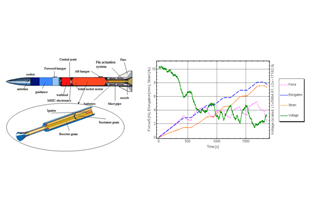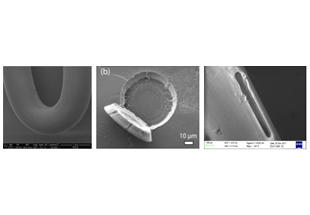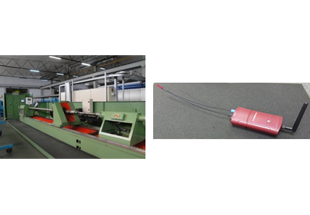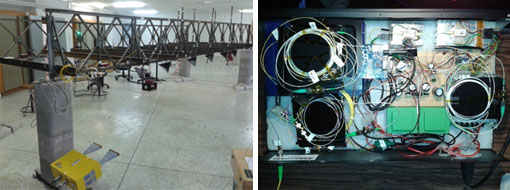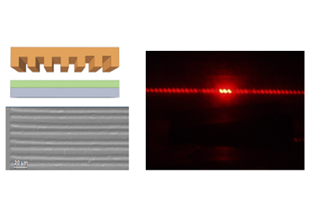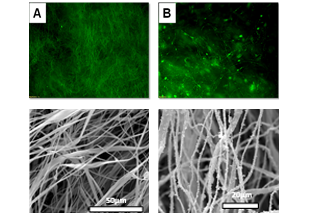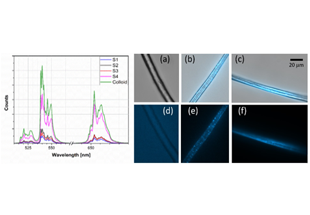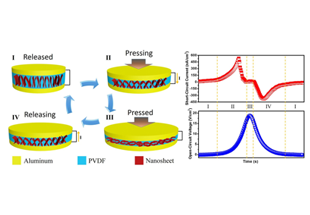Search
CLOSEDevelopment of Photonic Sensors & Monitoring Systems
Dr. Christos Riziotis
Applied Photonics – Materials & Devices
- Development of Photonic Sensors & Monitoring Systems
- Engineering of Plasmonic and Non-Linear Photonic Devices
- Planar Optical Components & Multifunctional Integrated Optical Circuits
- Photonic Engineering for Biomedical Applications
Our current research interests in this engineering area focus on the development of low cost photonic sensors with operational characteristics that can be applied in a variety of current and emerging applications in infrastructures monitoring, predictive maintenance, assets’ management and Internet of Things.
The research activity lies in the design and development of suitable devices by photonics engineering in combination with novel functional or nanostructured materials. Additionally the use of special micromachining tools based on excimer and femtosecond lasers enable the modification of optical fibers and the fabrication of various photonic prototype devices for customised sensing architectures.
A. Polymer and Multimode Optical Fibres for Sensors Development
Coupling the sensing and monitoring flexibility offered by photonics technologies, with the data transmission flexibility and wireless networking capabilities provides opportunities to develop hybrid wireless sensor solutions for wireless condition monitoring architectures and maintenance management & support strategies. Use of Plastic Optical Fibers-POF in combination with laser based rapid prototyping and novel functional nanostructured materials is proposed as a viable approach for developing an integrated customizable photonics platform of low circuitry complexity and cost, combining desired characteristics such as reliability, operational autonomy and safe operation in presence of high electromagnetic fields or even in potentially explosive/flammable environments.
Successful customization has demonstrated efficient, robust sensors for demanding applications like strain monitoring of energetic propellant materials used in solid rocket motors -SRMs for guided or space missiles. Also there have been implemented displacement and strain sensors and systems in heavy machinery production lines and infrastructures.
Sensors’ customization by proper functionalization of POFs’ surface with novel diblock amphiphilic polymers leaded to multiagent sensors allowing the detection of a wide variety of measurands, like toxic aromatic hydrocarbons- benzene and toluene, ammonia, relative humidity levels and specific proteins such as lysozyme or BSA, which find applications in industrial or environmental monitoring and chemical and food industry. Wireless enabled sensors have been demonstrated also for efficient biochemical monitoring of industrial-grade lubricants/coolants’ aging in metal polishing/finishing heavy machines with great-anticipated personnel health protection and economic impact.

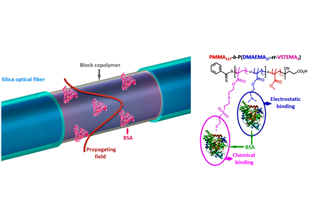
B. Distributed Fiber Optic Sensors
A prototype interrogation unit for a Phase- Optical Time Domain Reflectometry System has been developed exhibiting low cost and low complexity characteristics, while is capable of providing adequate resolution and measuring speed for large scale infrastructures’ structural health monitoring (SHM). Assessment of the developed system in a model Bailey type metallic bridge has shown truly distributed sensing comparable to more expensive monitoring techniques like fibre Bragg Gratings, or Laser tracking.
C. Free Space Remote Optical Sensors
Further to optical fiber based sensors, certain applications often require a remote point sensing operation due mainly to specific restrictions of the surrounding environment under monitoring. By using soft lithography techniques remote sensors for detection of ammonia and aromatic hydrocarbons were developed.
D. Nanostructured Electrospinable Materials for Fluorescent Sensors
Novel alternative materials have also recently studied for the development of fluorescent-based gas sensors with remote interrogation capability. Electrospun nanofibrous materials of various polymers with embedded fluorescent agents (such as anthracene moieties, rhodamine B-Functionalised with Core -Shell Ferrous Nanoparticles or even NaYF4:Yb/Er Up-Converting nanoparticles) have been employed for the demonstration of gas sensing as those electrospun materials offer large area due the 3D fibrous network that can enhance their responsivity. Also novel piezoelectric PVDF polymers with embedded carbon quantum dots for photo luminescent based sensing were developed towards an autonomous mechatronic nano-generators platform.
Structural health monitoring of solid rocket motors’ propellant using polymer optical fibers
Key Engineering Materials, 2013, 543, 360
ArF excimer laser microprocessing of polymer optical fibers for photonic sensor applications
Journal of Optics 2015, 17, 015402
Amphiphilic diblock copolymer based multi-agent photonic sensing scheme
Journal of Polymer Science Part B: Polymer Physics 2014, 52, 46
Journal of Polymer Science Part B: Polymer Physics 2015, 53, 327
Materials Chemistry and Physics 2018, 216, 421
A Low-Cost Phase-OTDR System for Structural Health Monitoring: Design and Instrumentation
Cost-effective polymethacrylate-based electrospun fluorescent fibers toward ammonia sensing
Macromolecular Materials and Engineering 2017, 302, 1600453
Scientific Reports 2020, 10, 367
Fluorescent electrospun PMMA microfiber mats with embedded NaYF4: Yb/Er upconverting nanoparticles
IOP Methods and Applications in Fluorescence 2019, 7, 034002
Wireless Condition Monitoring Integrating Smart Computing and Optical Sensor Technologies
Applied Photonics – Materials & Devices
- Development of Photonic Sensors & Monitoring Systems
- Engineering of Plasmonic and Non-Linear Photonic Devices
- Planar Optical Components & Multifunctional Integrated Optical Circuits
- Photonic Engineering for Biomedical Applications

